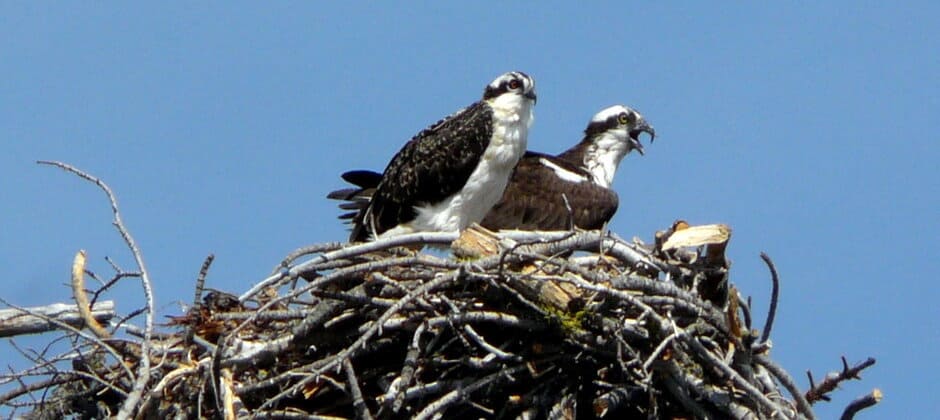Share this article
TWS2020: Ospreys nest successfully on phone towers
Researchers reveal a strong signal that ospreys nesting on cellphone towers have similar productivity and success rates when raising young than their counterparts nesting in other areas.
“We determined that there was no difference between nest success, though larger sample sizes could influence this quite a bit,” said Gage Barnes, an undergraduate researcher at Murray State University involved with ongoing research featured this week at The Wildlife Society’s virtual 2020 Annual Conference, on a video presentation.
Ospreys (Pandion haliaetus) went through a large decline due to the negative effects of DDT in the 20th century, but populations began to recover after the pesticide was banned in 1972. It helps that the birds are fairly tolerant to humans.
“You can find them nesting on many man-made structures such as bridges, telecommunications towers, telephone poles, but you can also find them on natural substrates such as dead snags,” Gage said.
Nesting on telephone poles or cellphone towers isn’t ideal for humans or ospreys — nests can catch fire, causing damage to both birds and infrastructure. But Gage and his colleagues wondered if there might be some sort of negative effects on nesting success and productivity as well on cellphone towers, since they are so much taller than natural nesting areas like dead trees. They are typically farther away from the water where the osprey feed. They also could experience higher wind speeds, which might blow chicks off of the towers, or in the worse cases, dislodge entire nests.
Some 61 ospreys were released at Land Between the Lakes National Recreation Area in Kentucky and Tennessee between 1981 and 1989, and the population increased between 1999 and 2017.

Osprey often nest on snags in more natural settings. Credit: GlacierNPS
Gage and his colleagues monitored 31 nests, including 11 on telecommunications towers, 10 on natural features like snags, and another 10 on navigational channel markers in the water. They observed successfully incubated nests for one hour, three times a day, every six to 20 days, watching bird behavior as well as tracking fledgling productivity and nest success. They also tracked whether there was human disturbance by hikers or ship traffic.
They ran the data they collected through models and found that nest success and productivity didn’t change between the three types of nests they analyzed, though Gage said that larger sample sizes might impact these results. They did find that nests on channel markers had about twice as much fish delivery than on cellphone towers or snags. But the towers also had no human disturbance.
“We hypothesize that there’s most likely a trade-off between the amount of fish delivered and human disturbances,” Gage said.
He speculated that there may be some other impacts on the birds’ first year of life in these different types of nests. For example, given that the nestlings on the channel markers seem better fed, they may fledge stronger, and in better condition, than young osprey from the other types of nests. This, in turn, may impact their first-year survival.
But future studies using tracking devices on the birds for their first year of life would be needed to determine any potential effects.
Conference attendees can visit office hours for this contributed paper on Wednesday, Sept. 30 from 2 p.m. to 3 p.m. to learn more and ask questions.
Header Image: Osprey nesting in Stanislaus National Forest, California. Credit: Dawn Ellner








